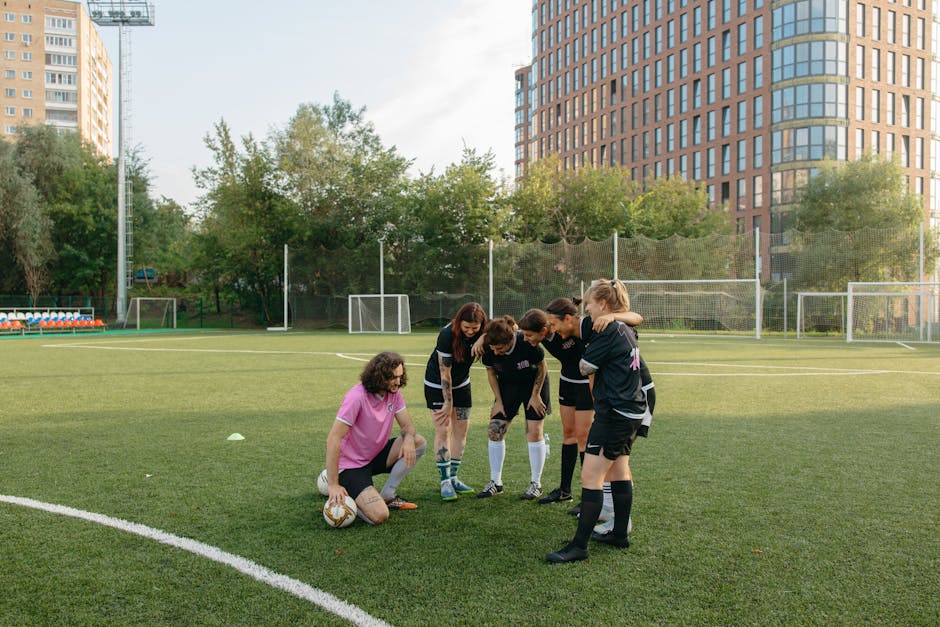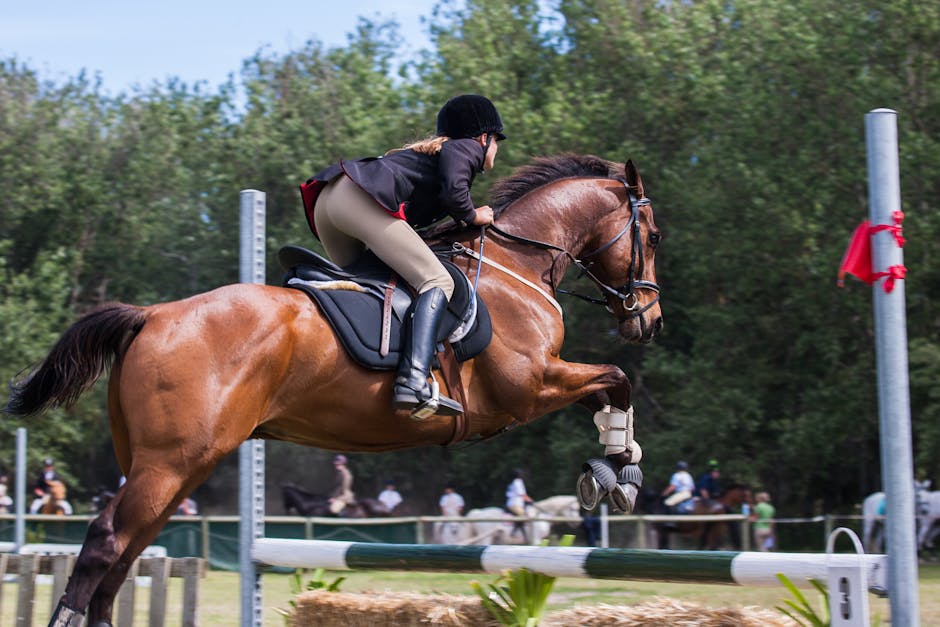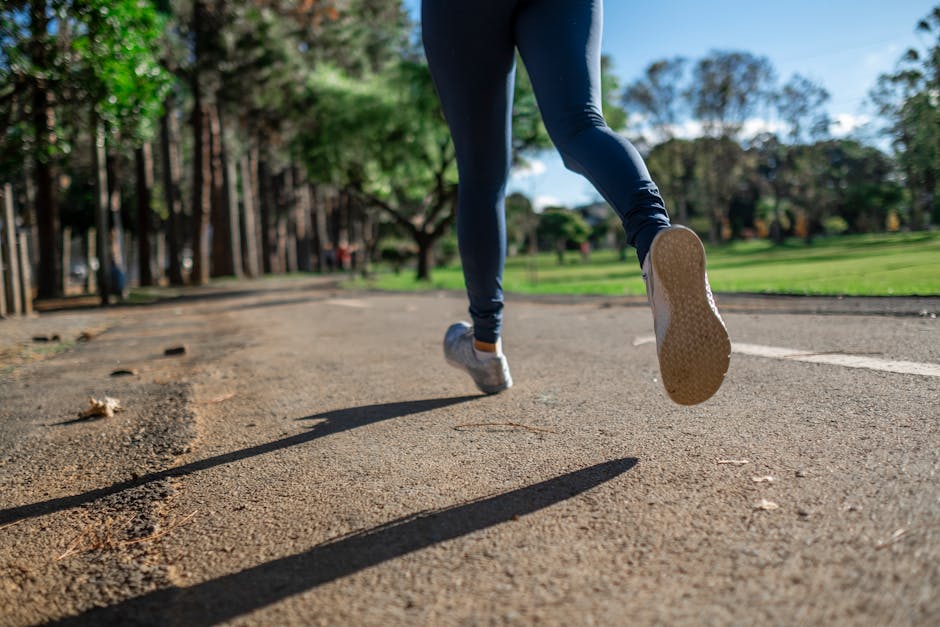Urban Greening: Elevate Your Outdoor Sports Performance Today!
Urban greening is more than just a trendy phrase; it’s a burgeoning movement that reshapes our cities and potentially boosts outdoor sports performance. Imagine jogging through a park, the scent of fresh flowers and the rustle of leaves around you enhancing every breath, invigorating your body and mind. Urban ecosystems rich with greenery provide a unique set of benefits for athletes and sports enthusiasts alike. This article explores how these city ecosystems foster athletic capability, encouraging better performance, motivation, and well-being.
The Green Factor: Why Urban Greening Matters for Sports

At first glance, the connection between urban greening and sports performance might seem tenuous. However, research suggests that urban green spaces significantly impact physical health and athletic performance. Numerous studies have indicated that exposure to green areas affects mental well-being, enhancing concentration, alleviating stress, and increasing overall life satisfaction—all factors that contribute to athletic performance.
Benefits of Green Spaces on Mental Health

When athletes train or compete, mental clarity and emotional resilience are just as essential as physical endurance. Green spaces act as natural stress relievers. According to a study published in the Journal of Environmental Psychology, being in green environments can reduce feelings of anxiety and depression. Such improvements in mental health are crucial for athletes who regularly face high-pressure situations.
Moreover, urban greening can spark a sense of community, encouraging social interactions that build camaraderie among athletes. A vibrant outdoor setting can enhance spirits, uplifting the mood and motivating athletes to push their limits during training or competitions.
Improved Air Quality: A Breath of Fresh Air

Believing that urban environments contribute solely to pollution would be an oversight. Urban greening initiatives—including parks, gardens, and tree-lined streets—help mitigate air pollution. Plants absorb carbon dioxide and pollutants, releasing oxygen in return. For sports enthusiasts and athletes, access to fresh air may enhance their stamina, lung capacity, and overall performance. This is especially significant for athletes who engage in cardiovascular-centric sports like running and cycling.
The Physical Edge: From Nature to Performance Improvement

The advantages of urban green spaces extend beyond mental well-being into physical performance enhancement. Exposure to natural environments has been linked to improved physical health outcomes. In fact, studies have shown that individuals who utilize green spaces for exercise tend to engage in more physical activity overall.
Nature as a Natural Gym

Consider that outdoor green spaces can serve as an natural gym—a positive facet considering that many urban dwellers may not have easy access to traditional workout facilities. Whether it’s a trail through a local park or a grassy field where sports leagues gather, encouraging community members to engage in sports and activities amid lush surroundings can lead to healthier, more active lifestyles.
Urban Ecosystems and Injury Prevention

Additionally, urban greening can also play a role in injury prevention. Natural terrains, such as grass and dirt, provide lower-impact surfaces than concrete. This might reduce the risk of sports injuries commonly associated with harder surfaces. Studies note that athletes training in natural environments often report fewer lower-body injuries than their counterparts who primarily train on synthetic or hard courts.
Performance Feedback: The Psychological Connection to Urban Nature

Sports performance isn't solely about physical prowess; psychological factors play a vital role as well. The presence of nature can have psychological benefits that translate into better performance on the field or court. Some athletes find that training in green spaces boosts their motivation, leading to longer sessions and greater output. Harnessing the potential of urban nature offers a unique way to further refine athletic strategies.
Feeling the Connectedness

Athletes often thrive on their connection to their surroundings. The “biophilia hypothesis” posits that humans have an innate affinity for nature, so engaging with urban green spaces can foster a deeper connection to not just the environment but also to the sport itself.
In cities where sports teams actively utilize parks and green spaces for training, the players often report higher engagement and satisfaction levels. The beautiful atmosphere can rekindle excitement and passion for their sport, helping to keep them focused and dedicated.
Sustainability and Community: Growing Together

As urban greening projects become more widespread, entire communities benefit not just from enhanced aesthetics but also from shared experiences in sports and recreation. Sustainable sports practices can also arise from increased participation in community-oriented green spaces. Here are some ways this integration could work.
Collaborative Ecological Efforts

Communities with flourishing parks often host events tailored for athletes—be it fun runs, outdoor yoga classes, or kid-friendly sports leagues, fostering collaborative initiatives making fitness accessible for everyone. The greater the investment in green urban spaces, the more opportunities arise for registering and nurturing local talent in sports.
The connection between sustainability and sports goes a long way. Many athletes are now advocates for eco-friendly practices, emphasizing the importance of maintaining healthy environments. For inspirational reading, check out this fascinating article shedding light on how sustainability in sports shape careers.
Fostering a Healthy Lifestyle
Additionally, city planners who prioritize green spaces help cultivate healthier lifestyles among residents. For young athletes, easy access to parks enhances their chances of developing a passion for sports at an early age. This is where grassroots sports programs can begin, allowing future athletes to evolve in more nurturing environments.
Real-Life Examples: Cities with Successful Green Initiatives
Across the globe, several cities have implemented successful urban greening initiatives that highlight the relationship between green spaces and enhanced athletic performance. Let’s explore a couple of them.
New York City: The High Line and Central Park
New York City is renowned for its parks, particularly Central Park and the High Line, which exemplify how urban greening revitalizes communities and enriches athletic experiences. Central Park, with its sprawling greens, various running paths, and scenic views, attracts thousands of joggers and cyclists daily. The High Line introduces a unique elevated space that combines art, nature, and sport, encouraging sustainable exercise options in the heart of the city.
Singapore: The City in a Garden
In Singapore, the initiative dubbed “City in a Garden” epitomizes the fusion of urban living and green spaces. The extensive green roofs, vertical gardens, and park connectors not only beautify the city but also promote active lifestyles. Residents enjoy jogging along picturesque routes, accessing gyms within parks, and uniting through community fitness events, demonstrating a clear link between urban greening and sports engagement.
Harnessing Nature's Power: Effective Training Methods
To optimize the benefits of urban greening, athletes can adopt specific training methods that leverage natural environments. Tailoring training to outdoor settings can enhance performance results.
Nature-Inspired Workouts
Athletes can perform sport-specific drills within urban green spaces, incorporating elements of nature into their training. For instance, utilizing benches for step-ups, tree trunks for stretching, or grassy areas for agility drills can enhance adaptability to different environments, honing athletic skills and promoting creative workouts.
Moreover, personalized training could further involve mindfulness exercises within natural settings, such as yoga or pilates on the grass. Engaging in these practices not only enhances athletic performance but also fosters mental focus, providing tools to tackle stress during intense moments.
Seasonal Considerations: Training in All Weather
Athletes can maximize seasonal variations by training in different urban green settings. For example, snowy landscapes can offer opportunities for winter sports while maintaining fitness. Conversely, summer months can be about engaging in outdoor activities that promote endurance, such as trail running or playing team sports in the shade of trees.
Whether it’s a brisk fall jog through fallen leaves or a summer soccer match under tree canopies, adapting workouts to seasonal changes creates a variety in training styles and keeps athletes engaged.
Final Thoughts: Greening as a Pathway to Performance Excellence
Urban greening is not merely a luxury; it’s an essential component of developing better outdoor sports performance. As cities continue to evolve and embrace green initiatives, the interconnected relationship between environmental health and athletic capability becomes increasingly evident.
Athletes can harness the potential of urban green spaces for both mental and physical advantages, leveraging them to enhance performance, resilience, and enjoyment of their sport.
By collaborating with local organizations, communities can mimic successful examples seen in prominent cities, paving the way for increased accessibility to these resources. Cities should actively invest in underappreciated green spaces, ensuring that everyone—athletes and community members alike—has the opportunity to thrive in a natural setting.
The collective responsibility to embrace urban greening initiatives will cultivate passion, innovation, and achievement in the world of sports for generations to come.



